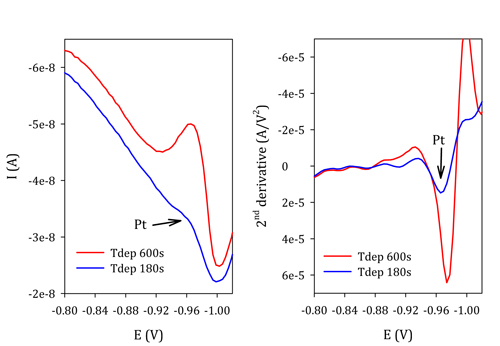First results from platinum reference samples published
In Cobelo-García and co-authors work, data on platinum (Pt) concentrations in SAFe and GEOTRACES reference samples is reported for the first time. The paper also provides helpful information for those using voltammetric procedures for the analysis of trace elements in seawater, where the use of signal processing (e.g. second derivative) can successfully be used to overcome the effects of intensive matrix background or the presence of interfering peaks.

Figure: Original and second derivative voltammetric scans obtained in a coastal seawater sample at 180 s and 600 s accumulation time on a HMDE. Conditions: 0.5 M H2SO4, 3.3 mM formaldehyde, 0.45 mM hydrazine. Platinum concentration in cell: 0.55 pM. Click here to view the figure larger.
Reference:
Cobelo-García, A., Santos-Echeandía, J., López-Sánchez, D. E., Almécija, C., & Omanović, D. (2014). Improving the voltammetric quantification of ill-defined peaks using second derivative signal transformation: example of the determination of platinum in water and sediments. Analytical chemistry, 86(5), 2308–13. doi:10.1021/ac403558y. Click here to access the paper.
